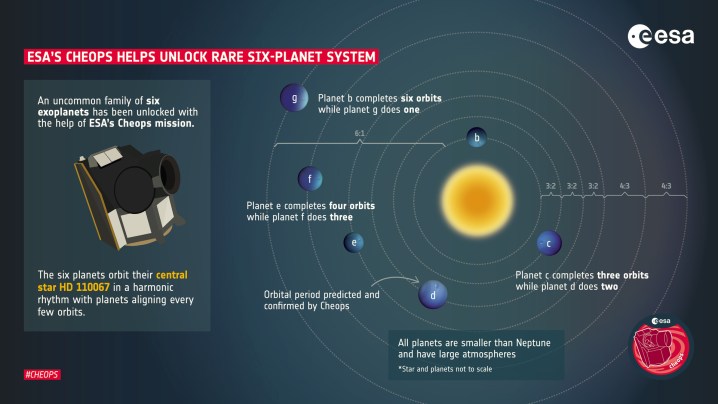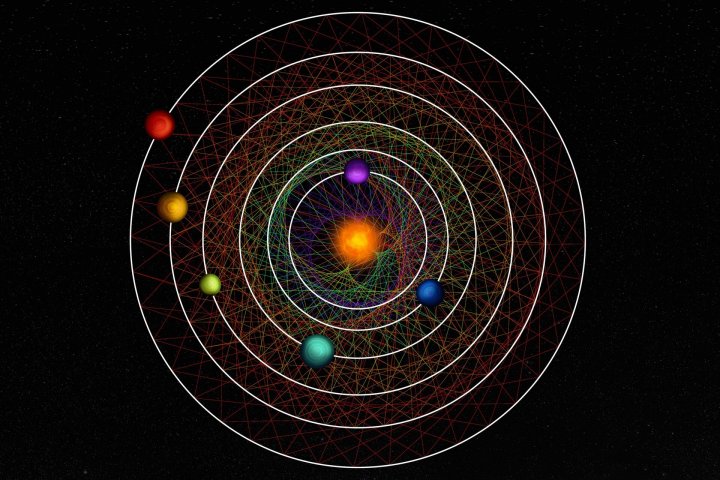Astronomers have discovered a rare star system in which six planets orbit around one star in an elaborate geometrical pattern due to a phenomenon called orbital resonance. Using both NASA’s Transiting Exoplanet Survey Satellite (TESS) and the European Space Agency’s (ESA) CHaracterising ExOPlanet Satellite (CHEOPS), the researchers have built up a picture of the beautiful, but complex HD110067 system, located 100 light-years away.
The six planets of the system orbit in a pattern whereby one planet completes three orbits while another does two, and one completes six orbits while another does one, and another does four orbits while another does three, and so one. The six planets form what is called a “resonant chain” where each is in resonance with the planets next to it.

It is this chain of resonances that makes the system so unusual. “Amongst the over 5,000 exoplanets discovered orbiting other stars than our sun, resonances are not rare, nor are systems with several planets. What is extremely rare though, is to find systems where the resonances span such a long chain of six planets,” explained one of the researchers, Hugh Osborn of the University of Bern, in a statement.
The planets in this system are all of a type called sub-Neptunes, which are planets smaller than Neptune that are unlike any of the planets in our solar system, but are thought to be some of the most common exoplanets. Planets are thought to often form in resonance, due to the gravitational forces involved, however, this delicate balance is easily thrown out by perturbations such as a passing star or an impact from a large asteroid or comet.

Researchers are keen to investigate systems like HD110067 because it can show what a system might look like if it does not experience any of these dramatic events.
“We think only about 1% of all systems stay in resonance,” said researcher Rafael Luque of the University of Chicago. “It shows us the pristine configuration of a planetary system that has survived untouched.”
The research is presented in the journal Nature.
Editors’ Recommendations
Credit: Source link


Comments are closed.